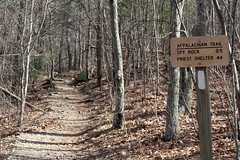
Hypothesis: Rapid publishing output and a wide disparity of publishing sources and formats has made finding the right content at the right time harder for librarians.
Speaker: Mark Coker, founder of Smashwords
Old model of publishing was based on scarcity, with publishers as mediators for everything. Publishers aren’t in the business of publishing books, they are in the business of selling books, so they really focus more on what books they think readers want to read. Ebook self publishing overcomes many of the limitations of traditional publishing.
Users want flexibility. Authors want readers. Libraries want books accessible to anyone, and they deliver readership.
The tools for self publishing are now free and available to anyone around the world. The printing press is now in the cloud. Smashwords will release about 100,000 new books in 2012, and they are hitting best seller lists at major retailers and the New York Times.
How do you curate this flood? Get involved at the beginning. Libraries need to also promote a culture of authorship. Connect local writers with local readers. Give users the option to publish to the library. Emulate the best practices of the major retailers. Readers are the new curators, not publishers.
Smashwords Library Direct is a new service they are offering.
Speaker: Eric Hellman, from Unglue.it
[Missed the first part as I sought a more comfortable seat.]
They look for zero margin distribution solutions by connecting publishers and libraries. They do it by running crowd-funded pledge drive for every book offer, much like Kickstarter. They’ve been around since May 2012.
For example, Oral Literature in Africa was published by Oxford UP in 1970, and it’s now out of print with the rights reverted to the author. The rights holder set a target amount needed to make the ebook available free to anyone. The successful book is published with a Creative Commons license and made available to anyone via archive.org.
Unglue.it verifies that the rights holder really has the rights and that they can create an ebook. The rights holder retains copyright, and the ebook format is neutral. Books are distributed globally, and distribution rights are not restricted to anyone. No DRM is allowed, so the library ebook vendors are having trouble adopting these books.
This is going to take a lot of work to make it happen, if we just sit and watch it won’t. Get involved.
Speaker: Rush Miller, library director at University of Pittsburgh
Why would a library want to become a publisher? It incentivizes the open access model. It provides services that scholars need and value. It builds collaborations with partners around the world. It improves efficiencies and encourages innovation in scholarly communications.
Began by collaborating with the university press, but it focuses more on books and monographs than journals. The library manages several self-archiving repositories, and they got into journal publishing because the OJS platform looked like something they could handle.
They targeted diminishing circulation journals that the university was already invested in (authors, researchers, etc.) and helped them get online to increase their circulation. They did not charge the editors/publishers of the journals to do it, and encouraged them to move to open access.





